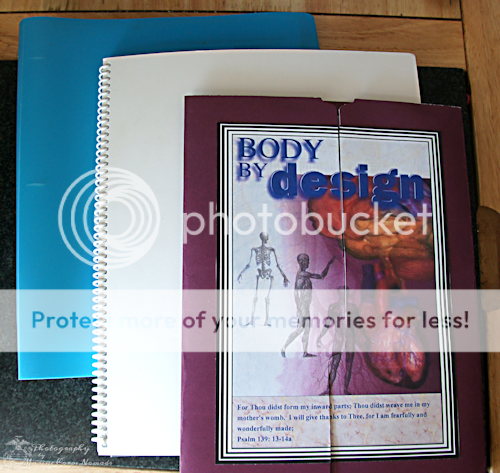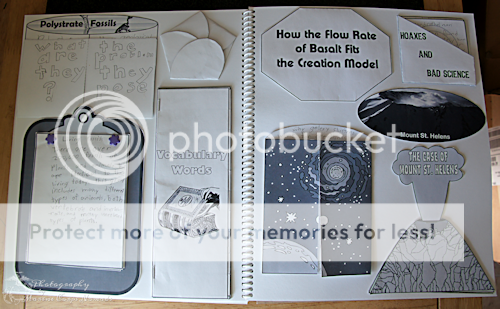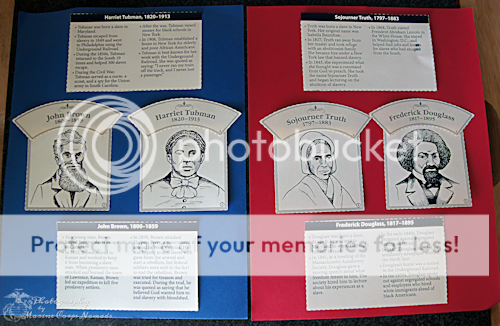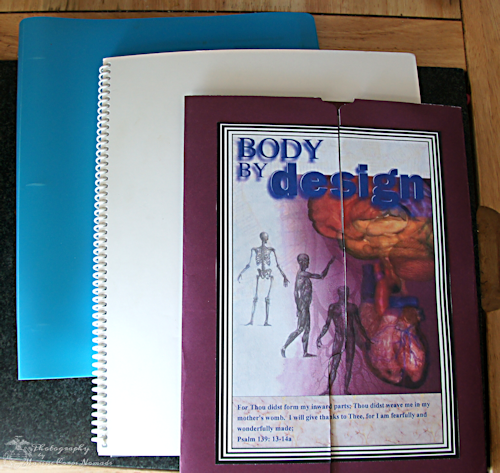
Alternative Lapbook Methods
In the first part of Lapbooking Made Easy, I talked about the basics of lapbooking. In the second part, I went over some different way to organize lapbooks. In this third and final installment of Lapbooking Made Easy, I’ll be showing some alternative lapbook methods.
As I said previously, lapbooks are traditionally made using file folders as the base, but some people found that they wanted a less bulky way of lapbooking. Enter in a couple of alternatives to lapbooking….

Blank Spiral-bound Books
Whether you make your own spiral-bound cardstock books or you purchase them from a place like or >Bare Books, spiral-bound books are a great way to make a more compact lapbook. Depending on the size of your lapbook, you may even be able to place multiple lapbooks inside of one spiral-bound book. For some of our creation units, we chose to put a couple of different lapbooks inside of one spiral binding since they were about the same general topic. We later did this with a couple of history studies as well.
Spiral-bound books tend to be a little more durable than traditional lapbooks. An added bonus is you don’t have as much work to do for assembly as you’ll just be placing the mini-books within the already created book. In other words, you don’t have to figure out how many additional flaps you may or may not need to complete the lapbook. Munchkin felt this style of lapbook look a little more neat because it resembled a book.

Notebooks with Cardstock
If you don’t want to spend any extra money on purchasing the spiral-bound books, you can easily use cardstock, a 3-hole-punch, and a 3-ring binder. Using cardstock gives you a great deal of flexibility in your studies because you’re not always limited to what will fit in a traditional lapbook. Some people use this method to combine notebooking and lapbooking, so they have a hi-bred notebook filled with review material. You can use cardstock for the lapbooking mini-books with adding in the notebooking pages for parts of the study that need more room than a mini-book affords.
By using a notebook, you can also add in sleeves or folders to store games or other non-traditional elements that are suited for being glued down or hole-punched. If you get extra creative, you can even add in sleeves for media presentations that your kids may have done. Did your kids take part in a debate as part of the gov’t unit? Why not put the video of it on dvd and include it in the notebook?
These are just a couple of alternatives to traditional lapbooking, but I’m sure there are more ideas out there. That’s the fun thing about homeschooling – you can always customize a method to fit your needs. What do Munchkin and I do now? Well, we’re currently taking the high-bred approach. We don’t use quite as many lapbook mini-books as we did when she was younger. Depending on the unit, I may bind the pages ahead of time or I may wait until we’ve completed the unit. It all depends on how much I think may need to be added along the way.


I really like the idea of the Spiral-bound Books thanks 🙂
Jen recently posted..Photo Project 10 on 10 – September
Your daughter may have graduated already, but thanks for posting this. It’s the best explanation of lapbooking I’ve seen. We are trying to do a little home schooling over the summer months with girls who have been in our care for only a year. Your posts are very helpful!